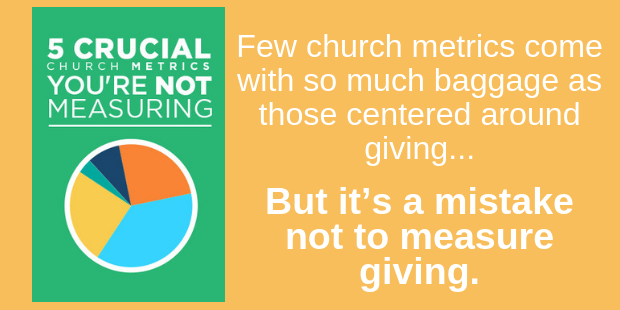
What Happens When You Can’t Pass the Plate?
Coronavirus Concerns in the Church
The last stat I heard about digital giving in the Church was that about 75% of churches have the option, but only 25% of giving actually happens via electronic means.
Even if this statistic is slightly askew, the reality is that many churches are facing some hair-raising days. If we don’t gather for a few weeks, it could present some serious challenges to many of the nation’s churches. It is highly probable that churches will collect significantly less money than they are used to collecting over the next 3-8 weeks.
This is a time that calls for proactivity and faith.
Proactivity will drive us to consider what we must in light of a quickly altered reality. Everything just changed – and for many churches, it may drive decisions about rethinking what we can afford to do in the short run. If I were in your congregation, I would be much more at ease if my pastors and leaders were trying to get ahead of the game and not just wait for the sky to fall.
At the same time, we have to bank on the faith we profess and the idea that God will continue to provide for the Church. Our churches may actually change as a result of the days ahead. But maybe this is an opportunity to wake up to a new day God has for all of us. Sometimes a crisis causes us to see more clearly…
Here are a few thoughts for church leaders to consider:
- Your first calling is to care for the people in your congregation. Find out where people are suffering, alone, or scared and deploy help when you can.
- Continue to follow best practice as outlined by healthcare professionals. Defying that advice is not a sign of suffering for Christ, it is a sign of bravado that may lead people to become very ill and shows disrespect to the broader community. Our reputation as good citizens is on the line.
- Find ways to link people to each other in homes and via virtual or digital means if possible. Reaching out to each other via an old-fashioned phone call may be the most caring thing you can do.
- Begin creating contingency plans A, B, and C if the church revenue decreases by 10%, 20% or 30%. What would you suspend, stop or change? And how can you communicate this proactively as opposed to creating doomsday negativity?
- Send a letter or email to the congregation that does not communicate desperation but the reality of your financial situation in light of the suspension of services. Get ahead of this – people need to know the reality of the situation, your plans to address the challenge, and your care about the people more than church budgets.
- Pray for physical healing and the eradication of this virus for all of the people of your city. And also pray that this pandemic will cause all of us to think about the truly important priorities in life once again. Spiritual awakening may be right around the corner.
May the Heavenly Father, God of Creation keep and sustain us in all ways and at all times, including the next few weeks of uncertainty. May the Savior Jesus Christ, in whom all things hold together, grant us healing by His miraculous power to bring life and health out of what is intended for death and suffering. May the Holy Spirit soak us with the peace that passes understanding. And may the Church recommit to dependence on God’s provision in all things and at all times. Amen.

Tags: Church Giving, Churches closed, Coronavirus, Reduced offerings























